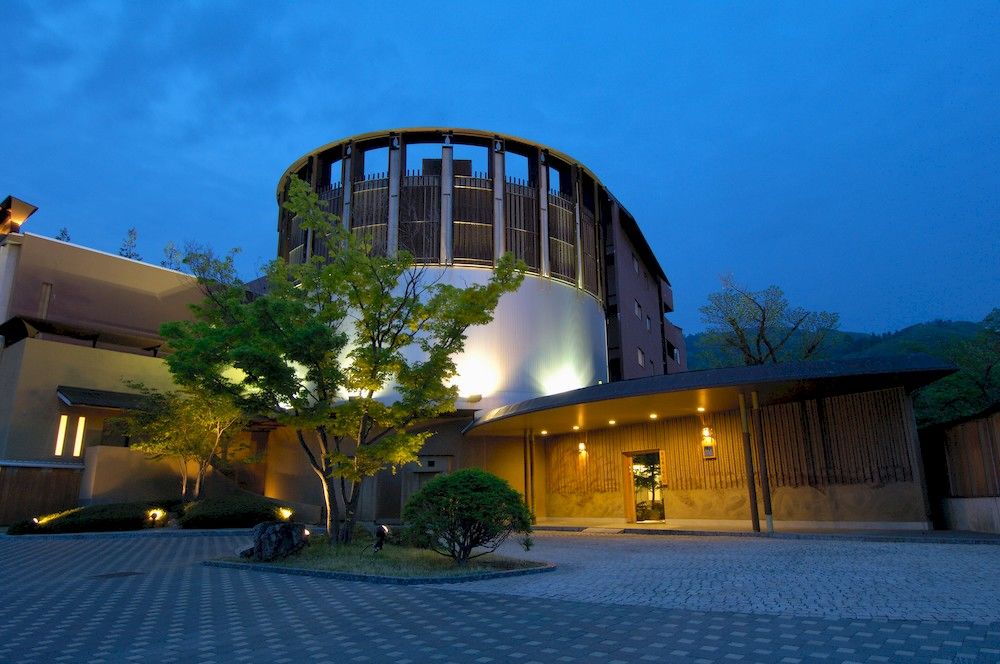Amy McNichol visits Kai Matsumoto in Japan; luxury unlike any she’s ever seen before
If you’re heading to Japan, you’ve probably scrawled ‘Tokyo’ and ‘Mount Fuji’ in to your itinerary and circled them excitedly with felt tip pen. You might not have done the same with Matsumoto, a lesser known city in the Nagano Prefecture, surrounded by gob-smackingly beautiful mountains.
The mountains that you drive over (and indeed beneath courtesy of some epic scale tunnels) are tummy-turningly high and belly-flippingly bendy at points. I visited in autumn and despite the dazzling sunshine, the leaves on the towering trees were turning that rich red colour you presume is enhanced in the guidebooks.
We made a beeline for a resort named KAI which is located somewhere within a mish mash of teeny tiny streets. The concept here is traditional craftsmanship meets modern design. In simple terms, KAI is an extraordinarily plush take on a traditional Japanese guest house or ‘ryokan’.
Car doors are opened for us and our bags are out of the boot before we can splutter an ill-pronounced ‘konichiwa’. We’re escorted in through a narrow entrance which gives way to a high-ceilinged, cylindrical lobby. There’s live classical music here every evening and guests are encouraged to head to the pop up wine bar and foot tap while enjoying some pretty excellent acoustics.
The room itself is generous. There are two separate loos off a spacious entrance hall and a huge but minimally decorated living area. After a tour, our guide asks if I have any questions. I peer around, squinting and craning my neck to locate the bed. No sign. I splutter, ‘un, where do we sleep?’ and our guide giggles before informing me that our dinner reservation is at 7pm. This is when someone will set up our sleeping arrangements, futons actually, in the living area. It’ll be like a sleepover without the scary film and the Roller Cola.
The incredibly ornate ‘shoji’ paper screen that leads to the restaurant is a fine example of a difficult Japanese wood fitting technique. I marvel as I’m told that the 2000 wooden parts here, are arranged in to this intricate pattern without glue or screws, they were just wedged in there by a pair of very skilled hands.
Dinner itself is a private affair. You don’t just get your own table, you get your own room and the serving staff shuffle between the dining parties. Guests slide their legs underneath a low table in the centre of their room and dangle them into a hole specially dug out for shoeless feet.
I try the kaiseki menu, a traditional multi-course Japanese dinner. One course is seven, bite-sized delicacies including strawberries with a tofu dressing that shouldn’t work but does; a chunk of chestnut tofu wrapped in tofu skin which is both creamy and crunchy and a rather more substantial-looking piece of marinated salmon.
The sashimi comes with its own special menu to suggest the perfect seasonings. Matsumoto is landlocked so a river fish, iwana, is served. It is paired with mushroom, buckwheat seed and grated raddish while the raw, creamy squid is paired with wild sesame miso and crushed walnuts.
My highlight is the course of white fish, deep fried in tempura batter with a side of Matcha green tea salt dip. It’s basically Japanese fish and chips with a posh, mushy pea green helping of salt.
Kai’s bathing facilities are something quite special and are another example of how the resort combines Japanese tradition with modern design. Centuries ago, before houses had bathrooms, villagers would toddle off to the local onsen, or hot spring, to bathe. KAI takes advantage of the nearby Asama Onsen by utilising its 45 degree celcius alkaline water (believed to be good for gastrointestinal disorders, skin problems and rheumatism), in 13 different modern baths.
There are two rooms for bathing, one for men folk and another for women, because when one visits an onsen, one gets completely, bare-butt naked. Split between the rooms is a bed bath, a standing bath, a collection of outdoor baths of different sizes and depths and a steam bath, as well as dry rooms.
As intimidating as getting your kit off and having a wesh in public seems to the average westerner, it’s an experience I’d thoroughly recommend to anyone seeking the ‘real’ Japan. It’s relaxing, liberating and actually really refreshing to treat the human body as something other than sexual. For those who still don’t fancy flouncing around with their bits out in public, 15 of the 26 rooms have their very own private outdoor onsen.
Before arriving at Kai I thought I had luxury all figured out – it’s the same all over the world, right? Sure, some places leave roses on your pillow, others greet you with Champagne, but luxury essentially looks the same everywhere. Wrong. I’ve never stayed anywhere like Kai Matsumoto whose idea of lux is beautiful, Japanese-style class. It stays true to Japanese traditions instead of bending to the western idea of extravagance. And for that, it’s a true delight.


